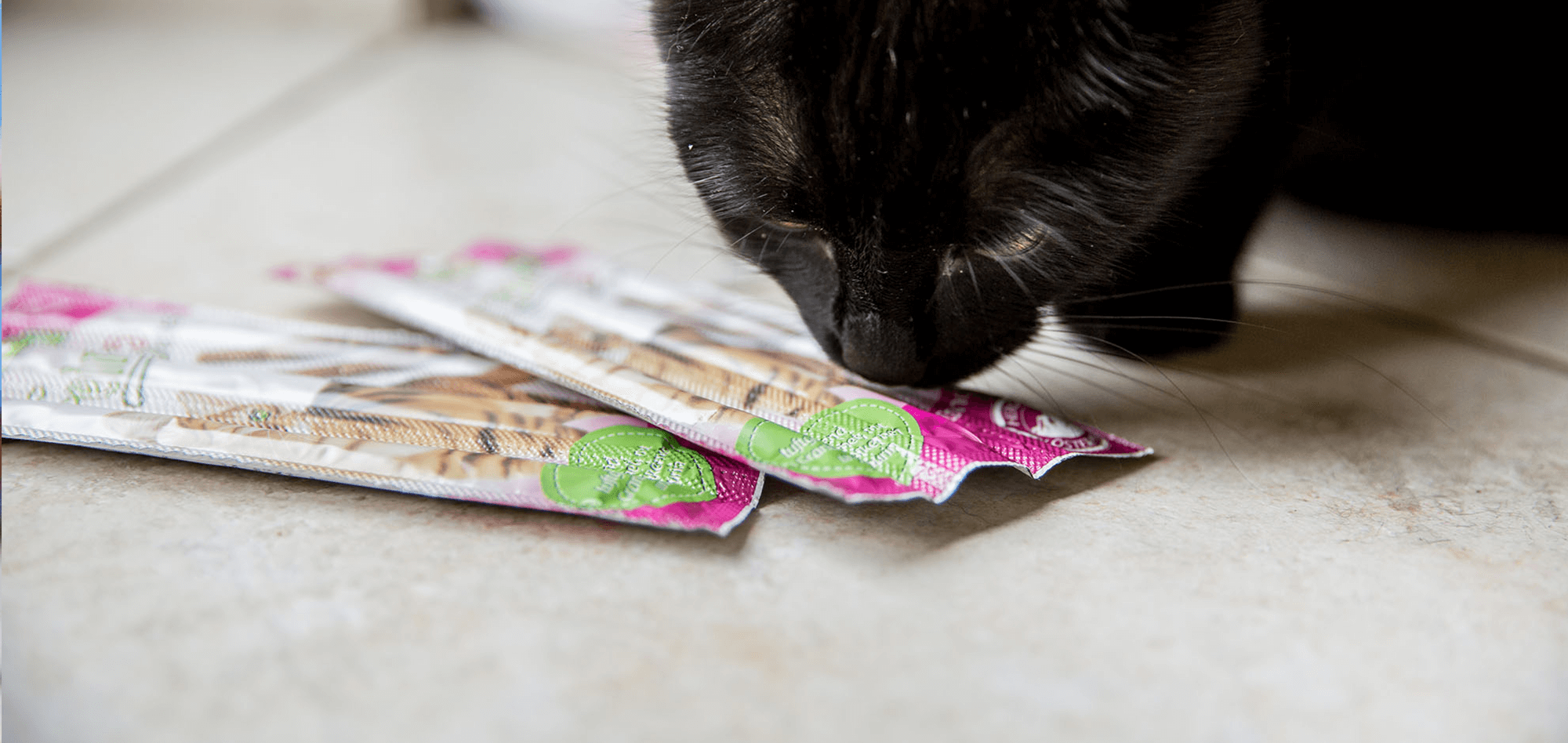Learn clicker training: Interview with Sandra Pedretti
01.08.2019

With the clicker training your cat can not only learn nice tricks, but also useful behaviour for everyday life (e.g. willingly go into her transport box). In addition, the relationship between you and your four-legged friend will be strengthened by the common activity.
As a certified psychologist and cat psychologist, Sandra Pedretti's focus is on a harmonious relationship between humans and animals. She advises cat owners on the correct handling of their velvet paws and on behaviour problems. As an expert in clicker training, she offers courses and lectures. Together with her well-trained cats she has already been a guest on the TV show 'Zeit für Tiere'. In our exclusive interview, Sandra Pedretti reveals what to keep in mind during training.
Which rules should be observed during training?
The most important of clicker training is that both you and your cat have fun! Under no circumstances should you force your cat to do something or scold him if something doesn't work out. This can lead to frustration and, in the worst case, even to her not participating anymore. So if something doesn't work right away, stay calm and think about what the problem could be. Often even a short break or a slightly different approach helps.
How do you best structure the course of the training?
Many great tricks come spontaneously from the different behaviours your cat offers during training. But if you want to teach your cat a certain trick, you should first think about how it should look like and which steps are necessary. Here it can help to create a small training plan in which you note these things down. However, cats are very inventive and find new ways - despite the previously created training plan. Being flexible is therefore worthwhile!
How to keep the concentration of the cat?
It is easier to train in a quieter environment without disturbing influences. If there are several cats in the household, it is best to practice with one cat alone, while the others are offered an alternative activity in the next room. It's important that you only train when your cat feels like it, so it's best to train at times when he's already active. Cats can only concentrate for a limited time, so several short training sessions are more sensible than one long one. It also increases motivation enormously if you use something that is a real "treat" for your cat as a reward, e.g. especially fine snacks.
What should you pay special attention to at the beginning of the training?
Basically you can train with any cat - no matter if young or old, calm or energetic. But not every cat can be enthusiastic about every exercise. Therefore you should consider which tricks are best suited to the temperament of your own cat. For example, cats that like to move are more likely to perform acrobatics, while calmer cats may prefer to do tricks.
How much time does a cat need to get to know the Clicker?
The clicker sound is first of all a neutral sound for your darling, whose meaning ("You did that well and for that you get a reward") must first learn. How long this takes varies: some cats will have learned it after one round, others will need several rounds. You can tell that your cat has reliably understood what the clicker means by the fact that she immediately looks expectantly in your direction as soon as the click is heard.
How can the beginning be made easier for the cat?
It is best to start with a really simple behaviour, which you practise with your cat. In this way both you and your pelt-nose can become familiar with the clicker training and you will have first experiences of success which will motivate you to continue. From simple tricks such as the "nose puff", more demanding tricks can be formed over time.
How does this "nose puff" work?
The "nose puff" is a great entry level trick! On the one hand because most cats show this behaviour by nature anyway and on the other hand because you can build up many other tricks on it later. You as a cat lover will know this: if you give your cat the extended index finger, curiosity will tempt her to smell it, i.e. to "nudge her nose". In exactly that moment the click takes place! With appropriate repetitions your quadruped learns to touch the finger with his nose when it is stretched out to him. Possibly some "fine adjustment" is necessary, so that your cat really touches the fingertip and does not sniff sideways etc. If this works reliably, you can form new tricks, e.g. you can lead your cat with your index finger and let him jump from chair to chair or you can hold your finger vertically from above and tempt him to "sit up and beg" piece by piece. The possibilities are manifold, so that there is the right one for every cat type!
What can be the reason if the cat does not react at all?
This can have several reasons. Especially at the beginning, the most likely one is that the cat has not yet understood what the clicker means. So before you continue to work on tricks, practice this with her again. Another reason could be that the motivation is missing. Here it is important to find a reward for which your cat is willing to work. For most cats, food (e.g. in the form of little treats) is the most popular reward, but toys or petting are also suitable.

